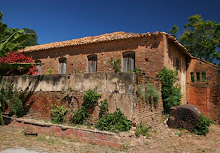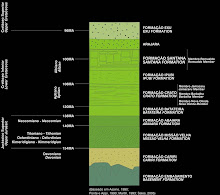
Langkawi GeoparkLangkawi Geopark is Malaysia’s first geopark and is located in the far northern corner of peninsular Malaysia. Located in northern State of Kedah, it is unique in the sense that it was formed on 99 islands that made up the legendary Langkawi Archipelago.
The total land area of Langkawi geopark is about 478km².
The total land area of Langkawi geopark is about 478km².
Langkawi has been dubbed as the birthplace or fetus land of region. The various natural landscapes of Langkawi reflects the island’s geodiversity and its complex geological history. It has the best-exposed and most complete Palaeozoic sedimentary sequence in Malaysia beginning from Cambrian to the Permian period. Later during the Mesozoic, the islands underwent a major tectonic event that resulted in the emplacement of its numerous granitic igneous bodies. This incredible power generated by nature from the deep mantle beneath the earth has driven up huge blocks of order rocks and somehow placed them above a very much younger terrain.
In Langkawi’s geological history, much of its geological development were linked to what had happened in the old supercontinent Pangea and southern hemispheric Gondwanaland since more than 550 million years ago. It started in the deposition of Machinchang sandstone in a lacustrine environment during much of the Cambrian time, followed by the submergence of the land during late Cambrian time (~500m.y) which allowed the invasion of shallow marine fauna into the proto-Langkawi sea. The continuous subsidence of the sea floor resulted in the formation of thick limestone of Setul Formation during the Ordovician. At the end of Ordovician time (~440m.y), the sea become to deep to eventually stop the limestone deposition temporarily.
Setul limestone continued to develop during Silurian until the Middle Devonian (~370m.y), followed by the deposition of sandstone and mudstone which sometimes are related to the rafted ice due to the global melting of Gondwana ice cap.
The dropstone bearing black sandstone and mudstone of Singa Formation during the Early Permian (~280m.y) before the sea was slowly brought up by a complicated tectonic process.
The Chuping limestone is believed to have stopped depositing before the end of Permian (~245m.y) by this tectonic event that among others brought up a large block of earth crust in the eastern part of Langkawi overlapping the much younger block in the west. The tectonic event ended up with the emplacement of granite beneath Langkawi’s crust at the end of Triassic (~220m.y).
The Chuping limestone is believed to have stopped depositing before the end of Permian (~245m.y) by this tectonic event that among others brought up a large block of earth crust in the eastern part of Langkawi overlapping the much younger block in the west. The tectonic event ended up with the emplacement of granite beneath Langkawi’s crust at the end of Triassic (~220m.y).
What we have in Langkawi today is a combined result of these various processes and the prolonged that took place ever since the Langkawi land was brought to the surface around 220 milion years ago. As a result, we have a beautiful mountainous range of Machinchang sanstone at the northwestern corner of Langkawi island, the conical Gunung Raya granite at the center and arugged karst terrain of Setul Limestone in the eastern part of Langkawi.
In the southwest of Langkawi islands, the Singa formation dominated while the Chuping Limestone dominates the western part of Dayang Bunting Island. Some of the landcapes a truly outstanding, particularly those of the Machinchang and the karstic limestone in the eastern part of Langkawi.
Based on its outstanding geological landscape, geological history and various other geological features such as sedimentary structures, fossil and erosional features, Langkawi Geopark certainly is the best geopark in the region. Langkawi’s rich geological heritage are mainly protected under the jurisdiction of the Permanent Forest Reserve Recreational Forest or geoforest Park managed by Forestry Department.
It is accessible by sea from Kuala perlis, Kuala Kedah and Penang or by air from Kuala Lumpur, Penang, Singapore and Bangkok.
More informations in http://www.langkawigeopark.com.my/ CHAN KIN ONN Photografies http://www.photomalaysia.com/forums/showthread.php?t=31509






























